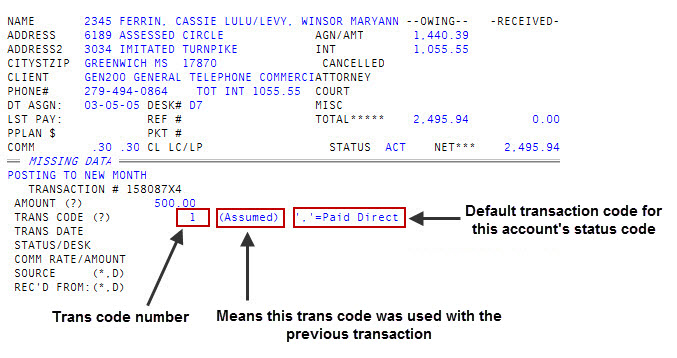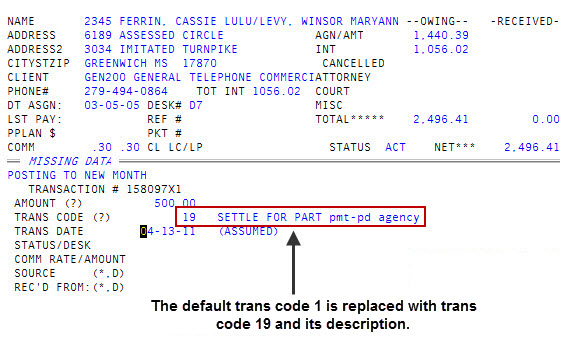Entering transaction codes in the Trans Code field
When you first navigate to the Trans Code field, a default transaction code may automatically display depending on how your agency's system is set up. When the transaction code from the previous transaction is used, the notation "(Assumed)" displays to the right of the transaction code. In the following example, transaction code 1 is the default code and was also used for the last transaction.

If you do not want to use the default transaction code, enter a new code. The default transaction code is replaced by the new transaction code along with its description. The cursor then automatically moves to the Trans Date field. In the following example, transaction code 19 was entered and has replaced the default transaction code 1.

The default transaction code depends on where the payer sent the payment. For example, the payer may accidentally send the payment to the client when it should have been sent to the agency. If this is set up in your system, the notation "Paid Client" or "Paid Agency" displays to the right of the code. To change the displayed notation to either one or the other, type a comma (,).
For responsible party (RP) packets, there is more than one person responsible for the account. For example, if you and your business partner fail in a business venture and you are both responsible for the debt, then there is only one debt in the system. RP packets are entered in The Collector System with the amount assigned to the primary RP and $0 assigned to the secondary RP. This means that you are both equally responsible for the debt. This also means you both get credit for any payments.
When you change the status code posting, you are viewing the primary RP—even if the transaction is for the secondary RP. The posting note reflects that the payment could be by a secondary RP, but the status code change is the old status code of the primary RP.